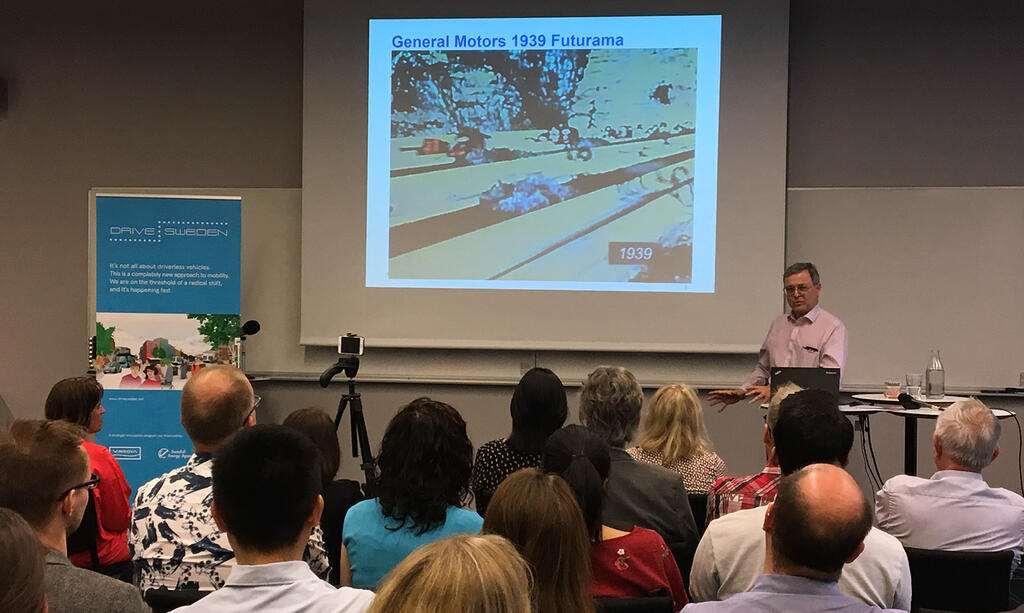A pioneer in autonomous vehicles
Dr Steven Shladover, a pioneer in research on automated transport systems, attracted many interested to Lindholmen and Drive Sweden's guest lecture. He talked about the importance of connectivity between vehicles and between vehicles and infrastructure, and both looked back and far into the future. Here you can also see his lecture.

The technology for developing autonomous vehicles is still in its infancy and untested – and will not be fully developed for some time, perhaps not until 2075.
Connectivity, both between vehicles and between vehicles and infrastructure, is crucial if we are to achieve higher levels of automation.
These were two messages from Dr. Steven Shladover from Berkeley University in California, one of the world’s most experienced researchers in the field of self-driving vehicles, when he visited Lindholmen Science Park in Gothenburg.
The well-attended guest lecture, which was organized by Drive Sweden, began with Shladover looking back at the past. Research into self-driving technology existed already at the end of the 1930s. For more than 40 years, autonomous vehicles have been used, for example, in airports – in closed systems where they do need to interact with other vehicles or objects.
“The challenge now is to handle an open system that is in constant change and to also handle
different types of objects: people, animals, traffic barriers and so forth,” says Shladover.
The theme of the lecture was the importance of connectivity between vehicles and between vehicles and infrastructure. Vehicles must be able to “negotiate” with each other to coordinate their driving without posing a safety hazard.
“Connectivity is needed to enable a higher level of automation,” says Dr. Shladover. “Without active connectivity, there is a risk that autonomous vehicles will undermine the current transport system.”
In order to understand and categorize what an autonomous vehicle can do, it is important to
understand the driver’s role, the system’s role, the level of connectivity in the vehicle and the
conditions under which a specific automation system – such as a motorway – is to be used.
“Certain terminology can sometimes stand in the way of understanding the technology,” he says. Autonomous vehicle systems is, for example, a term invented by Google that does not say very much."
Autonomous vehicles must be able to detect objects – but also predict how these objects may move.
“This is the challenge, how to define requirements for the system’s sensitivity threshold,” says
Shladover. “The system needs to detect everything if we are to guarantee a high level of safety, but for the sake of functionality it only needs to detect threats.”
The first challenge in showing that autonomous vehicles are safe is to identify which combination of scenarios to judge. You must also define what combination of testing – in closed test environments, on public roads and in simulations – is required to show that autonomous vehicles are safe. Steven Shladover is critical to media reporting of the self-driving technology.
“There is a difference between people who do this – and those who talk about it,” he says. “Many journalists lack the technical expertise to ask the right questions.”
He believes the technology is facing a lengthy period of development.
“I usually tell today’s students that they can work with this for the whole of their career. In my
opinion, the technology will be fully developed around 2075 – perhaps a little earlier, or perhaps a little later."
Download Dr Shladover's presentation
Here you can watch the lecture:


